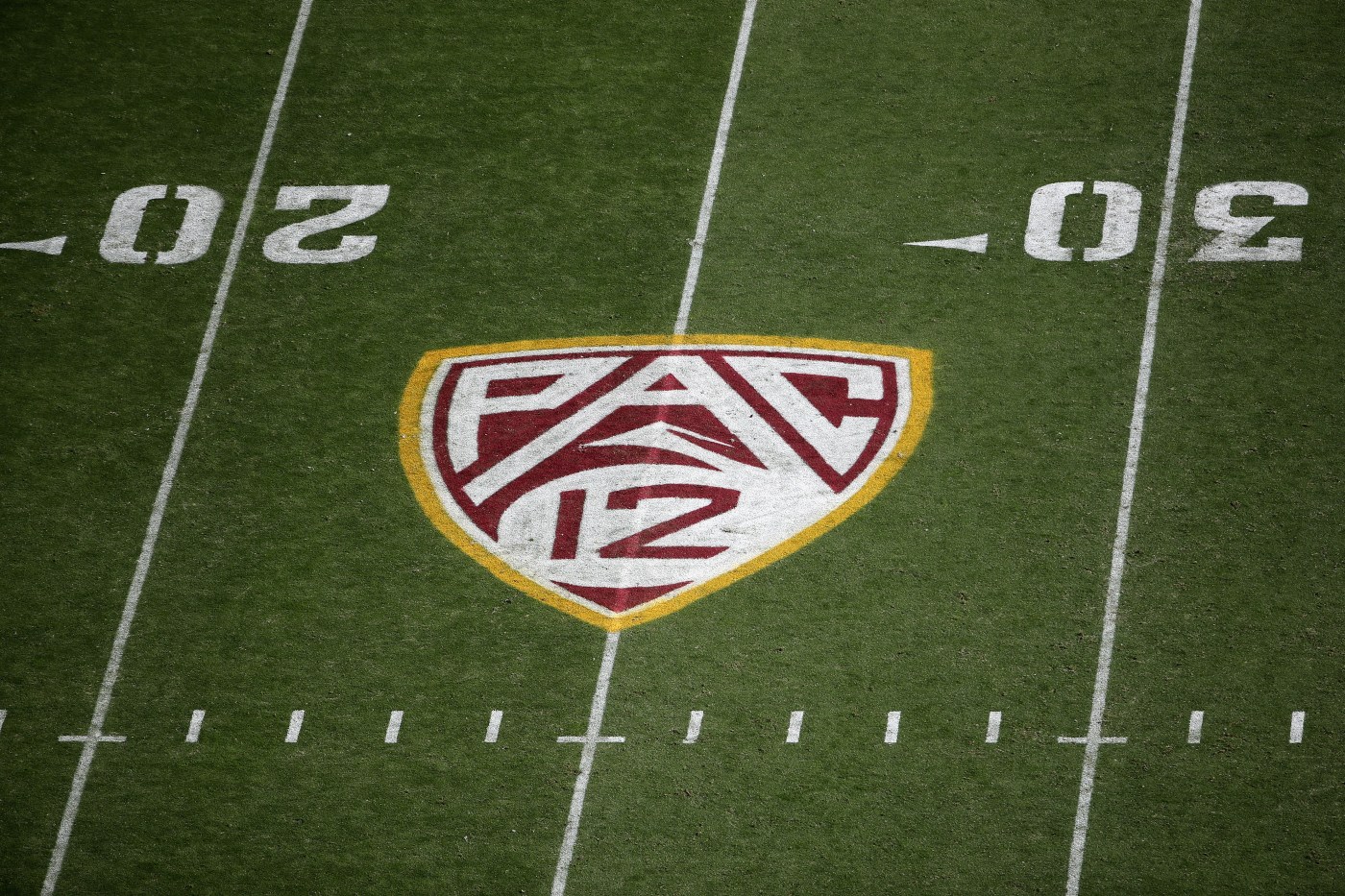The Hotline mailbag publishes weekly. Send questions to pac12hotline@bayareanewsgroup.com and include ‘mailbag’ in the subject line. Or hit me on Twitter/X: @WilnerHotline.
Please note: Some questions have been edited for clarity and brevity.
What percentage of total revenue did the other power conferences disperse to their membership compared to the percentage dispersed by the Pac-12? — @Milkbear79
An important issue because it cuts to the heart of the mission for any and all conferences: Distribute every last dime possible to the membership.
The Pac-12 has done a subpar job in this regard over the years, much to the chagrin of athletic directors and other campus officials. It seemed like the schools worked for the conference during the Larry Scott era, instead of the other way around.
Excessive spending on rent, salaries and travel played a role. So, too, did the structure of the Pac-12 Networks.
Whereas Fox operates the Big Ten Network and ESPN runs the ACC and SEC Networks, the Pac-12 has owned and operated its network and therefore had to cover the costs.
As a result, it typically has distributed a lower percentage of revenue to schools than its peer conferences.
How much lower?
Here are the relevant numbers:
(Information on the Pac-12 is taken from the Hotline’s analysis of the 2023 tax filings. Data from the ACC, Big Ten, Big 12 and SEC taken from USA Today.)
ACC
Revenue: $707 million
Total distributed: $649.3 million
Percentage distributed: 91.8
Big 12
Revenue: $510.7 million
Total distributed: $442 million
Percentage distributed: 86.5
Big Ten
Revenue: $880 million
Total distributed: $844 million
Percentage distributed: 95.9
Pac-12
Revenue: $603.8 million
Total distributed: $403.6 million
Percentage distributed: 66.7
SEC
Revenue: $852.6 million
Total distributed: $718.2 million
Percentage distributed: 84.2
It’s worth noting that each conference follows slightly different accounting practices, so let’s expand the scope and group the ACC, Big 12, Big Ten and SEC together.
Power Four
Revenue: $2.95 billion
Total distributed: $2.65 billion
Percentage distributed: 89.8
Even that percentage is substantially higher than the percentage distributed by the Pac-12.
One reason for the disparity is the Comcast accounting fiasco, in which the company overpaid the Pac-12 Networks over the course of a decade.
The Pac-12 knew about the issue but kept mum. Once Comcast realized the mistake, it withheld $72 million in payments to the conference.
Those withholdings help explain the 9.1 percent decrease in payouts from the conference office to the schools, from $37 million (average) in the 2022 fiscal year to $33.6 million in 2023.
Two things are equally true, it seems: The Pac-12 generally has done a poor job spinning off cash to the campuses (compared to its peers); and its performance in that regard last year was downright miserable.
In other words, the financial oversight has been lacking for years.
Shocking, I know.
Per media reports, the SEC just doled out $51 million to each member. What do you see in the future for schools like Washington State, Oregon State, Cal and Stanford, whose revenue could be only a fraction of that amount? How can those schools expect to compete at the highest level, especially in football and basketball? — Jim Varnell
They can’t.
Then again, those schools haven’t been competing at the highest level for years.
In reality, only 12 or 15 schools are consistently on the top tier of college football — the sport’s blue bloods, which have the combination of tradition, resources and brand power to consistently acquire the rosters needed to thrive.
We would include Oregon, Washington and USC in that group, but nobody else from the Pac-12.
Cal is effectively the same as UCLA; Washington State is similarly positioned to Arizona State.
That said, basketball is different. One or two elite players can change the trajectory of a season, and success is defined by the anything-goes nature of a postseason tournament that has produced the likes of Butler, Loyola, St. Peter’s and Florida Atlantic.
It’s far more egalitarian.
Football is a caste system.
When will former Pac-12 commissioner Larry Scott pay back the loan? — @Raimond80780510
For those unaware, Scott received a $1.8 million relocation loan from the conference years ago.
As we reported Thursday in our analysis of the Pac-12’s financial data, Scott must repay the loan by the end of next month.
The loan is yet another example of Scott’s sweetest-of-sweet financial deals with the conference. He also received a $3 million severance package and took home more than $50 million in salary from his tenure as commissioner.
That’s more — much more — than any school has received in cash distributions from his brainchild, the Pac-12 Networks.
How will the revenue-sharing plan, with schools paying up to $20 million to the athletes, affect Washington State and Oregon State in regard to budgeting and conference realignment? — @CelestialMosh
Before we address the specific situation, keep the following in mind about the settlement terms of the House lawsuit, which was approved Thursday:
The revenue-sharing model adopted by the power conferences features a permissive cap, which means schools are not obligated to pay the maximum amount.
Also, the $20 million cap (approximately) referenced in media reports will almost certainly rise because it’s hooked to annual revenue generated by the athletic departments — and that revenue is based, in part, on the media rights agreements that have escalator clauses.
For example, the Big Ten’s deal with Fox, NBC and CBS pays each school roughly $60 million early in the seven-year deal and more than $70 million in the final stages.
So we should expect that the permissive cap for Big Ten schools rises to well beyond the starting figure.
There will be immense pressure in the power conference to max out on revenue sharing. Whether that’s realistic is another matter.
WSU and OSU probably won’t have the wherewithal to hit the ceiling, which doesn’t mean they cannot be competitive in football and men’s basketball.
From the standpoint of the House settlement terms impacting realignment, I’ll simply add this:
Anything that increases the disparity between the highest-resourced football schools and everyone else is good for WSU and OSU because it adds pressure to the system and increases the likelihood of chaos.
The ‘Pac-2’ schools need chaos. They need upheaval.
Will UCLA be getting a much larger rights fee from the Big Ten Network than it did from the Pac-12 Networks, in addition to the network’s rights fee payment? — @Brian_Wood45
We could be sarcastic and simply note that anything is more than nothing.
Granted, the Pac-12 Networks grossly underperformed expectations and, at the peak of their revenue-generating power, spun off a paltry $3.5 million per school (approximately).
That’s substantially less than the Big Ten Network. Exactly how much less, we do not know.
The Big Ten Network is owned by Fox, which also has a broadcast TV partnership with the Big Ten. So the revenue sent to the schools is essentially wrapped together in one big, fat check.
That check, in turn, is combined with the revenue generated by the other broadcast deals (NBC and CBS) to create one giant stream of cash — more than $60 million per year.
You’ve discussed that Cal and Stanford should be doing all they can to get into the Big Ten, but do you believe they can pull it off? Do they have the internal support at the schools for it? — @skiswm
Three weeks ago, the Hotline created a to-do list for Stanford’s incoming president, Jonathan Levin, and Cal’s new chancellor, Richard Lyons.
Atop the list: In anticipation of the ACC eventually breaking apart, we believe the Bay Area schools should start lobbying Fox for membership in the Big Ten.
After all, Fox would have to pay for them — just as it paid for Oregon and Washington last summer — so the new members don’t take media revenue away from existing members.
Do I believe Cal and Stanford are capable of convincing Fox of their value to the Big Ten?
Given that both were surprised by the Pac-12’s implosion, it’s easy to envision them failing once again to see what’s around the corner and not pursuing a lobbying effort with Fox.
But you never know. The arrival of new leadership on both campuses could increase the level of strategic thinking.
If the ACC were to break up in the next couple years and the Big Ten picked up a new school (say North Carolina) at a full share of the media rights, would Washington’s and Oregon’s share get amended? — R and B Sylves
Although the Hotline isn’t privy to the legal documents, we are not aware of any trigger in the contract that would bump Washington and Oregon to full-share status during the current contract term (until the summer of 2030).
Related Articles
Pac-12 presidents approve House v. NCAA settlement terms as college sports economic revolution continues
Pac-12 tax filings: Revenue jumps in FY23, but Comcast mess wallops campus distributions
Pac-12 recruiting: Cal and UCLA roll on, Oregon State comes alive and Stanford goes national
House v. NCAA lawsuit: Pac-12 presidents (yes, all 12) expected to approve massive settlement, revenue-sharing plan
Key 2024 dates for college sports, from House case to CFP expansion
North Carolina would be heavily courted by both the Big Ten and SEC and possess the leverage to demand full-share membership.
But that probably wouldn’t impact the Ducks and Huskies one iota.
The primary question for the Pacific Northwest powers is whether they will gain full-share status in the Big Ten’s next media contract.
What do you see as the future for TV contract negotiations? Will schools continue to sign over their media rights to their respective conferences or negotiate directly with media partners? — @TerryTerry79
We do not foresee a situation in which schools negotiate directly, without the conference as a middleman.
But we certainly envision a world in which all media contracts are not created equally within the particular conference.
With costs escalating and the networks increasingly dependent on the big brands to generate market-setting ratings, the blue bloods have greater influence than they did even a decade ago.
Why would Michigan, for instance, continue to accept the same cut of the Big Ten’s media deal as Maryland?
Why would Texas agree to the same share of the SEC’s contract as Missouri?
The unequal-share model is coming. We can’t pinpoint a date. But it’s coming.
*** Send suggestions, comments and tips (confidentiality guaranteed) to pac12hotline@bayareanewsgroup.com or call 408-920-5716
*** Follow me on Twitter/X: @WilnerHotline
*** Pac-12 Hotline is not endorsed or sponsored by the Pac-12 Conference, and the views expressed herein do not necessarily reflect the views of the Conference.












